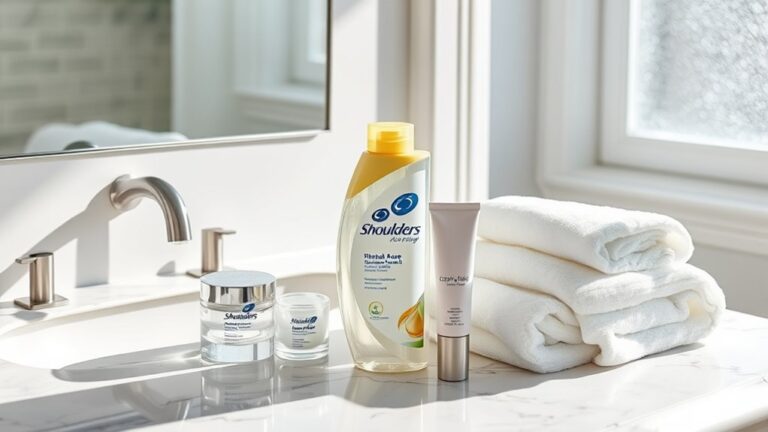Scabies may be microscopic, but the discomfort they bring is anything but small. Should you be managing these relentless mites, you’ve probably contemplated whether washing your bedding before or after treatment makes a difference—and the answer isn’t as straightforward as you’d hope. The timing, temperature, and even your laundry routine can impact how effectively you stop the itch and prevent reinfestation. Let’s analyze the best approach to keep those pests from coming back.
Understanding Scabies and How It Spreads
Scabies can sound frightening, but it’s just a skin condition caused by tiny mites burrowing under your skin. These mites trigger intense itching, especially at night, and you could notice a rash or tiny bumps.
The infection cycle starts when you come into close contact with someone who’s scabies—think prolonged skin-to-skin contact, like hugging or sharing a bed. The mites spread quickly, laying eggs under your skin, which hatch and worsen symptoms.
You’ll likely feel itching within weeks, but in case you’ve had scabies before, symptoms appear faster. Scratching can lead to sores, making things worse.
While it’s uncomfortable, scabies is treatable. Just keep in mind, it spreads easily, so prompt action matters.
The Importance of Washing Sheets During Treatment
Since scabies mites can survive for days on fabrics, treating your sheets and bedding is just as essential as treating your skin.
Proper sheet hygiene prevents reinfestation, as mites can crawl back onto you or others sharing the bed. Wash everything in hot water (at least 140°F) and dry on high heat to kill mites effectively.
Don’t skip pillowcases, blankets, or even stuffed animals—anything that touches your skin matters. Repeat this process throughout the treatment duration to guarantee no mites linger.
Should you be unable to wash certain items, seal them in a plastic bag for 72 hours to starve the mites. Consistency is key; one missed wash could undo your progress.
When to Wash Sheets: Before or After Treatment?
| Timing | Why It Helps |
|---|---|
| Before treatment | Removes existing mites to prevent reinfection |
| After treatment | Clears dead mites and leftover medication |
| Both times | Maximizes cleanliness and effectiveness |
Stick to hot water (at least 140°F) and high heat drying both times. Consistency is key—don’t skip either wash.
Step-by-Step Guide to Washing Infested Fabrics
Because scabies mites can survive off your skin for days, properly cleaning fabrics is just as critical as treating your body.
Start by gathering all infested items like bedding, clothes, and towels. Don’t shake them—you’ll spread mites.
For fabric care, use hot water (at least 140°F) and the highest temperature setting your machine allows. Add detergent, and in the event that it’s possible, a disinfectant.
Dry everything on high heat for at least 20 minutes to kill lingering mites. In case you’re unable to wash something, seal it in a plastic bag for a week—mites can’t survive without a host.
Wash gloves or hats you’ve touched, too. Repeat this process daily until treatment ends. Consistency is key to breaking the mite life cycle.
Additional Cleaning Tips to Prevent Reinfestation
Even after treating fabrics, scabies mites can still lurk in overlooked spots, so a thorough cleaning routine helps stop them from coming back.
Start by vacuuming carpets, upholstery, and car seats—anywhere skin cells collect. Empty the vacuum bag outside right after.
Wipe down hard surfaces like doorknobs, light switches, and counters with disinfectant. Don’t forget personal items like brushes, shoes, or headphones; store unwashable items in sealed bags for at least 3 days to starve the mites.
Wash stuffed animals, coats, and hats in hot water if possible. Rotate bedding and towels daily until the infestation clears.
Stick to these steps for at least a week following treatment—consistency is key for infestation prevention. It’s extra work, but it keeps those stubborn mites gone for good.
Common Mistakes to Avoid When Treating Scabies
You may consider treating scabies is just about applying medication, but skipping environmental cleaning can leave mites hiding in your home.
Using too much or too little cream won’t kill the mites effectively, so follow the instructions carefully.
These mistakes can drag out your recovery, so it’s best to get it right the initial time.
Overlooking Environmental Cleaning
While treating scabies, it’s easy to focus only on medications and forget about cleaning your surroundings—but that’s a big mistake. Scabies mites can survive off your skin for days, turning your home into an environmental hazard should you skip proper cleaning protocols.
Start by washing all bedding, towels, and clothes in hot water (at least 130°F) and drying them on high heat.
Vacuum carpets, rugs, and furniture thoroughly, then empty the vacuum outside. Don’t forget items like stuffed animals or throw blankets—seal unwashable ones in a plastic bag for a week to starve the mites.
Wipe down surfaces with disinfectant, and avoid sharing personal items until treatment is complete. Skipping these steps risks reinfestation, so stay diligent to break the cycle.
Misusing Medication Dosage
Because scabies treatment relies heavily on medication, getting the dosage wrong can delay healing or even worsen symptoms. Misusing your prescription or over-the-counter creams isn’t just ineffective—it can lead to medication side effects like skin irritation or even resistance. Here’s how to avoid common pitfalls:
- Follow the label exactly – Skipping doses or applying too little reduces dosage accuracy, letting mites survive.
- Don’t double up – Using extra cream won’t speed things up; it increases the risk of side effects.
- Time it right – Reapplying too soon can irritate your skin, while waiting too long lets scabies spread.
Stick to the plan, even though itching lingers. Your skin needs time to heal, and rushing the process often backfires.
Should you be unsure, ask your doctor—they’ll help you stay on track.
Conclusion
You thought your sheets were clean, but scabies mites can survive up to 3 days off your skin—yikes! Washing them before *and* after treatment stops these pests in their tracks. Use hot water and high heat to kill every last one, then breathe easy realizing you’ve cut off their escape. Stay consistent, stay clean, and soon, those itchy nights will be just a bad memory. You’ve got this.





